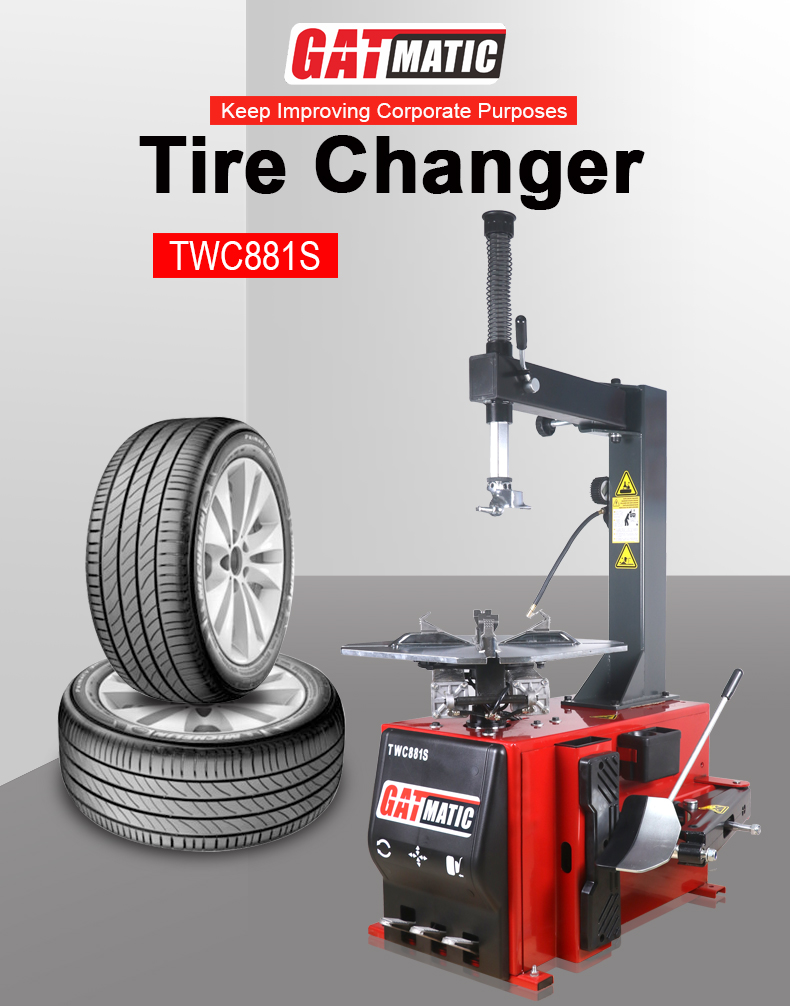Recent Blog
The Working Principle of Tire Changers: Streamlining Automotive Maintenance
Tire changers play a crucial role in the realm of automotive maintenance, enabling efficient and safe tire replacement. Understanding the working principle of these machines is essential for mechanics and enthusiasts alike. This essay provides an overview of tire changers, explores their components, delves into their working principle, highlights safety considerations, and emphasizes the significance of maintenance and troubleshooting.
I. Overview of Tire Changers
Tire changers are specialized tools designed to facilitate the removal and installation of tires on rims. They come in various types, including manual, semi-automatic, and fully automatic models, each catering to different needs and preferences.
II. Components of a Tire Changer
Tire changers consist of several integral components that contribute to their smooth operation. The key components include:
A. Bead Breaker: The bead breaker is responsible for separating the tire bead from the rim. It can be in the form of a mechanical arm or a pneumatic cylinder, depending on the type of tire changer.
B. Mounting and Demounting Tools: Tire bars, spoons, and duck heads are essential tools used to remove and install tires. These tools enable mechanics to efficiently maneuver the tire and disengage it from the rim without causing damage.
C. Wheel Clamps and Turntable: Wheel clamps and the turntable work together to secure the wheel during the tire-changing process. These components ensure stability and precise positioning, minimizing the risk of accidents or damage.
D. Power Assist Mechanisms: Tire changers often incorporate power assist mechanisms such as motors and hydraulic systems. These systems assist in various stages of the tire-changing process, enhancing efficiency and reducing manual effort. Impact wrenches and pneumatic tools also aid in loosening lug nuts and tightening them during wheel installation.
III. Working Principle of a Tire Changer
The tire-changing process involves several distinct steps:
A. Preparation and Setup: The tire changer is positioned appropriately, and the clamps and turntable are adjusted to accommodate the wheel size and ensure a secure grip.
B. Bead Breaking: The tire is placed on the turntable, and the bead breaker is activated. This mechanism exerts a force on the tire sidewall, breaking the bond between the tire bead and the rim.
C. Tire Removal: Mounting and demounting tools, such as tire bars and spoons, are employed to carefully remove the tire from the rim. Special techniques are utilized to avoid damage to both the wheel and tire during this process.
D. Tire Installation: The new tire is prepared by applying lubricant, after which it is positioned on the rim. Mounting tools, including duck heads or mounting heads, aid in securing the tire onto the rim without causing harm.
E. Bead Seating and Inflation: To ensure a proper seal, air pressure is used to seat the tire bead onto the rim. The tire changer also allows for precise inflation, enabling mechanics to achieve the recommended tire pressure for optimal performance and safety.
IV. Safety Considerations
When operating tire changers, adherence to safety guidelines is paramount. Mechanics should employ personal protective equipment (PPE) such as gloves and safety glasses. Additionally, precautions should be taken to prevent damage to the tire, rim, and equipment, ensuring a safe working environment.
V. Maintenance and Troubleshooting
Regular maintenance of tire changers is crucial to sustaining their efficiency and longevity. This includes inspecting and lubricating moving parts, checking hydraulic systems, and ensuring proper calibration. In the event of malfunctions or issues, troubleshooting techniques can be employed to identify and rectify problems, such as motor or hydraulic system malfunctions or jammed components.
VI. Conclusion
Tire changers serve as indispensable tools in the automotive maintenance industry, streamlining the process of tire replacement. By understanding their working principle, mechanics, and enthusiasts can efficiently and safely change tires, ensuring optimal performance and safety on the road. With a comprehensive overview of tire changers, their components, and the step-by-step process involved, individuals can approach tire changing with confidence. Emphasizing safety considerations, regular maintenance, and troubleshooting techniques, tire changers can be utilized effectively, enabling a seamless experience in the world of automotive maintenance.
Describe Your Needs In Detail!
We will carefully evaluate your needs and give professional solutions.



